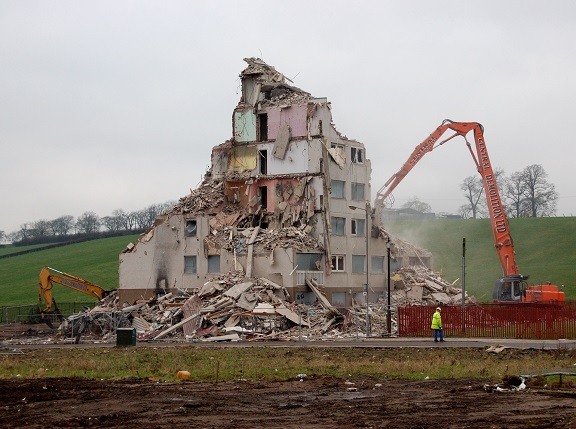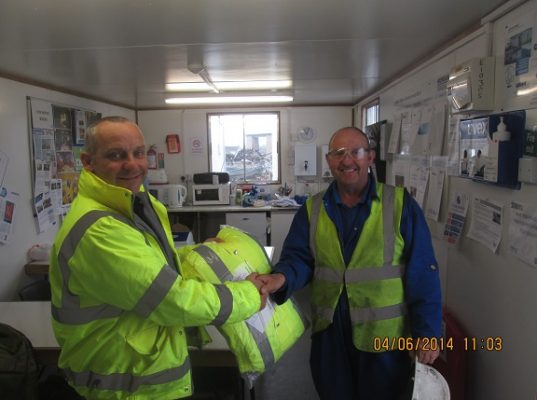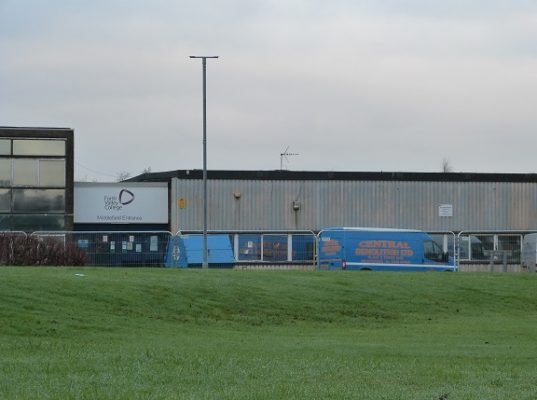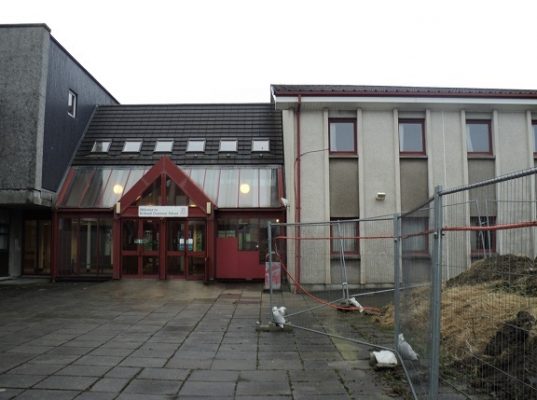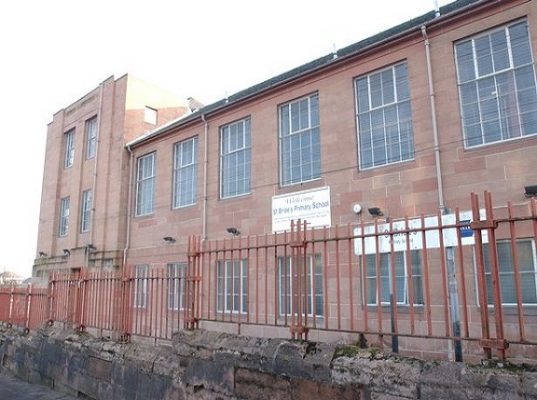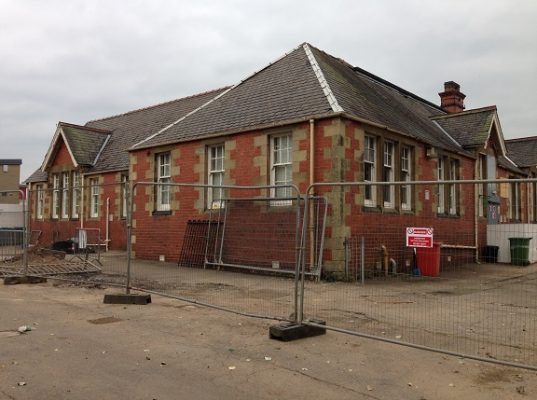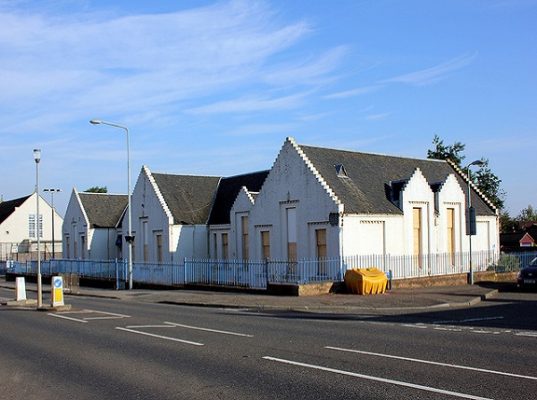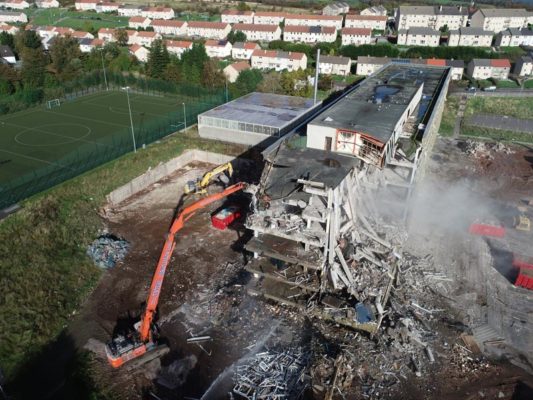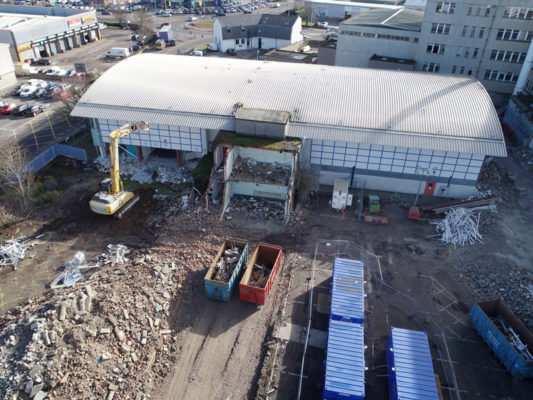Central Demolition Ltd were tasked by our client to carry out the removal of a water tank located on the roof of a primary school mounted on 4nr concrete columns. This small but interesting project had it’s challenges due to the risk of the timber & felt roof collapsing if excess weight was placed on it, but this was mitigated by using the below methodology.
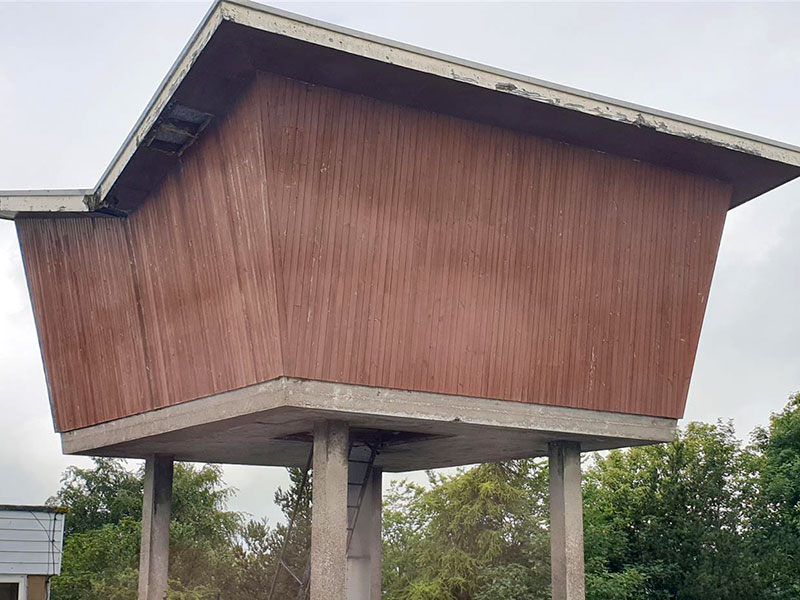
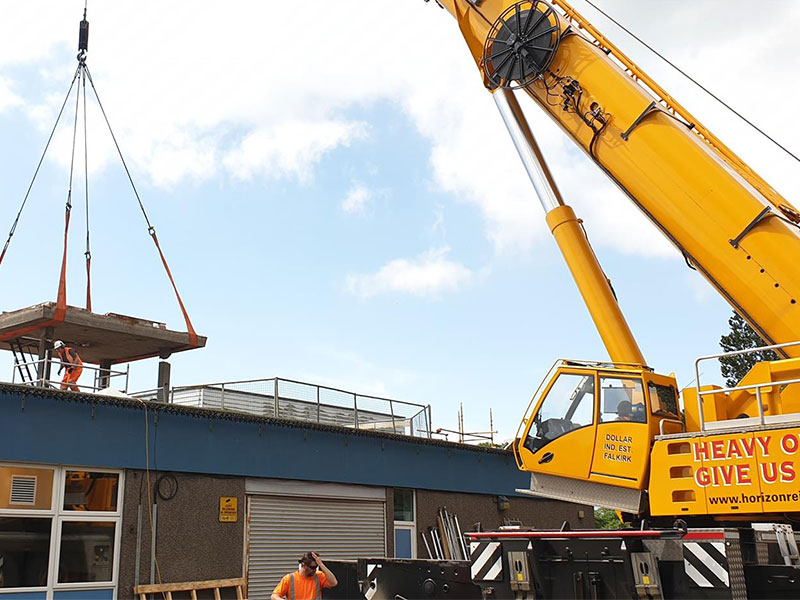
The preparatory works that were required for this project to begin were the initial set up of the access to the roof level. The method we used to gain access was the erection of a tower scaffold and setting out exclusion zones to prevent access to others. The tank was located on the roof of a live school but the risks of working with a live area was significantly reduced as we carried out the described works during the Summer holidays.
The timber and steel casing over the water tank was demolished using truck mounted MEWP. Due to the weight restrictions on the roof, we could not place any plant or scaffold on the roof. The material from the water tank was then demolished into small sections that was suitable for manual handling from our operatives, these small sections were then lowered down to an operative on the roof of the building, who would then walk to the end of the roof and place within a waiting skip.
Once the timber clad steel casing was removed, revealing the 3Nr water tanks, concrete slab and the 4Nr concrete columns that the tank was mounted on.
The water tanks were then lifted to ground level by crane and placed within the skip. The last section of this project was the remaining concrete slab and columns. Using the crane, we slung the slab and the crane took the weight which was 17.5T and an operative then drilled each column to free them from the slab. Each column was then slung and cut approx. 200mm from the roof level, before being individually lowered to the ground level for disposal off site.
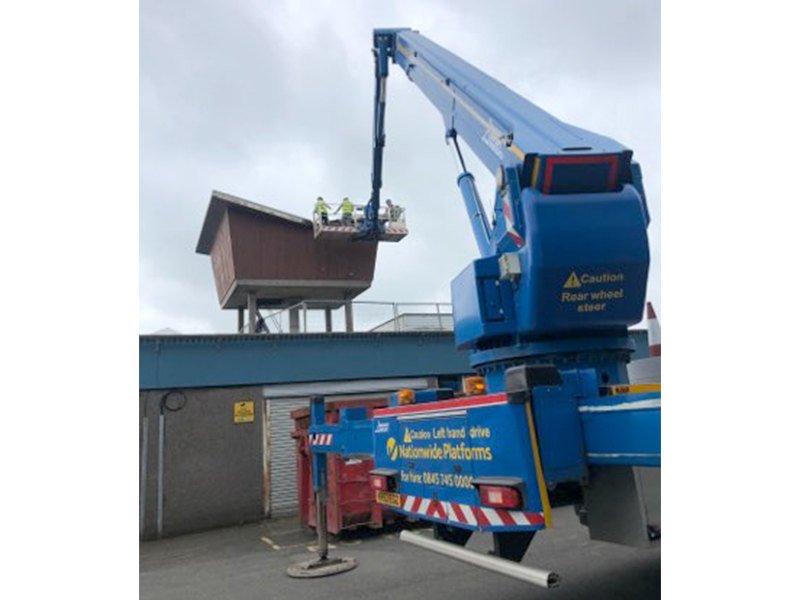
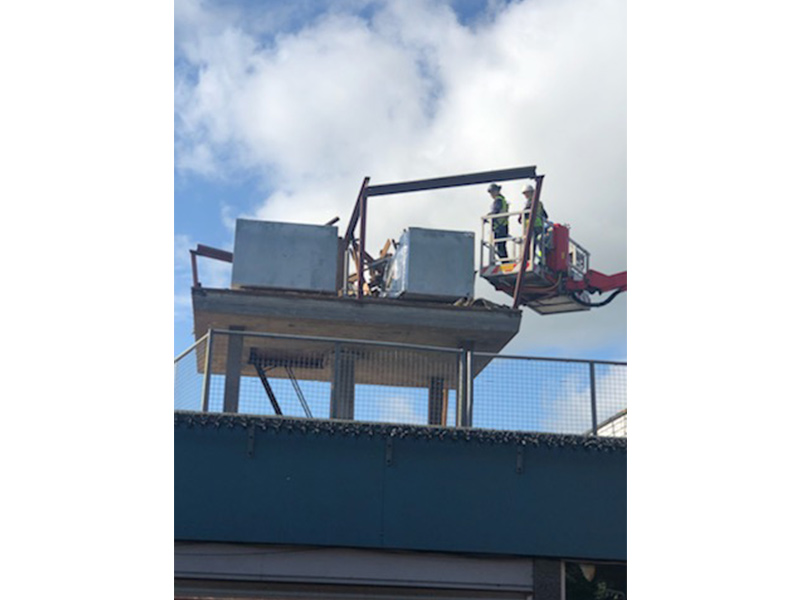
The final stage of the works was repairs to the 200mm high sections of concrete columns which were then felted to tie in with existing roof and to prevent water ingress. All materials were segregated in appropriate waste streams and recycled as necessary, as there was no asbestos removal works within the scope of this project, no waste was sent to landfill.
